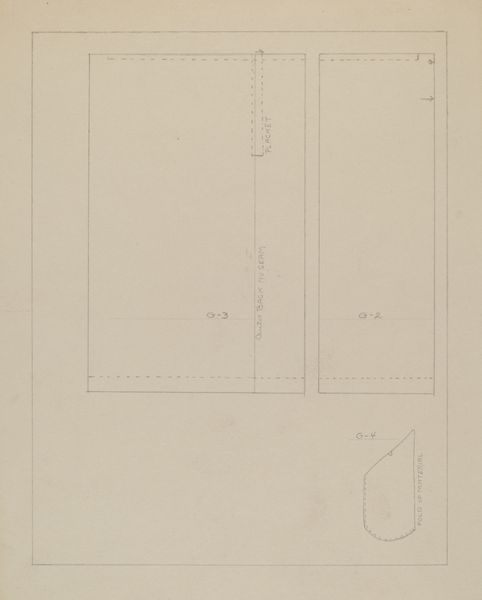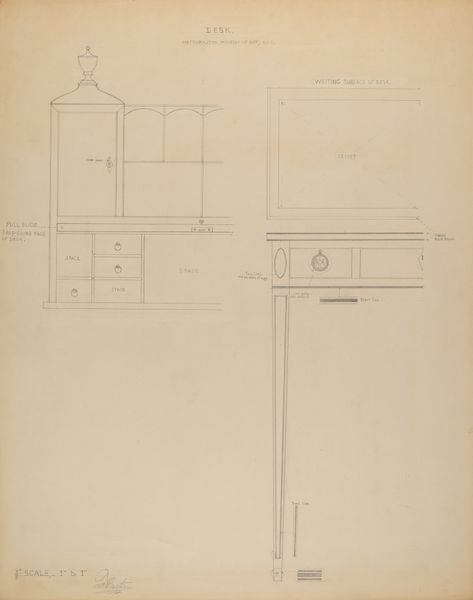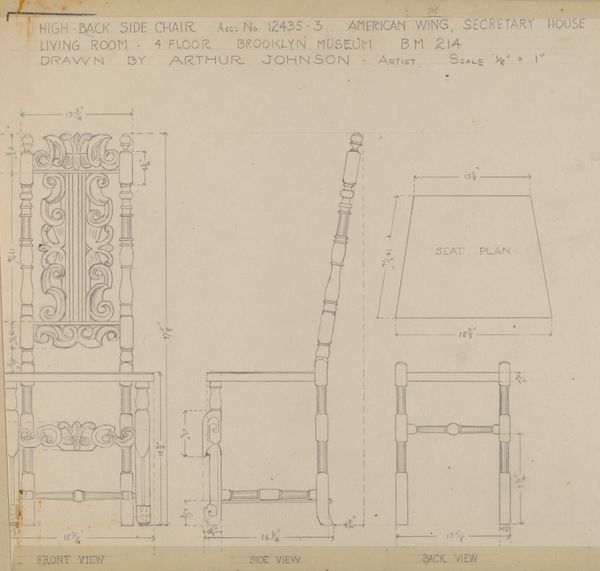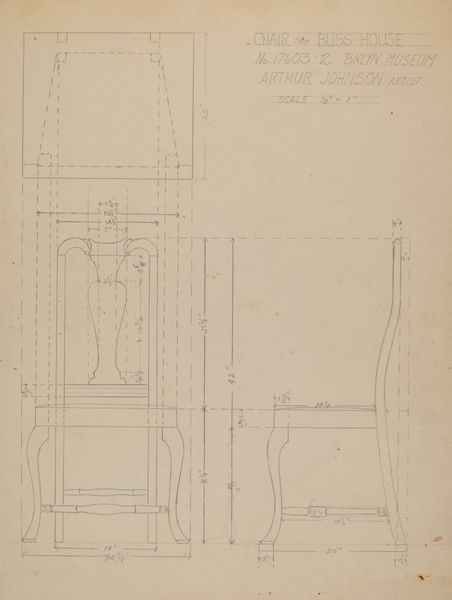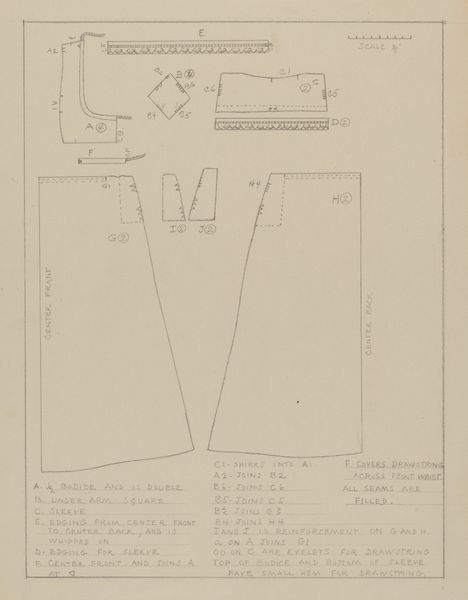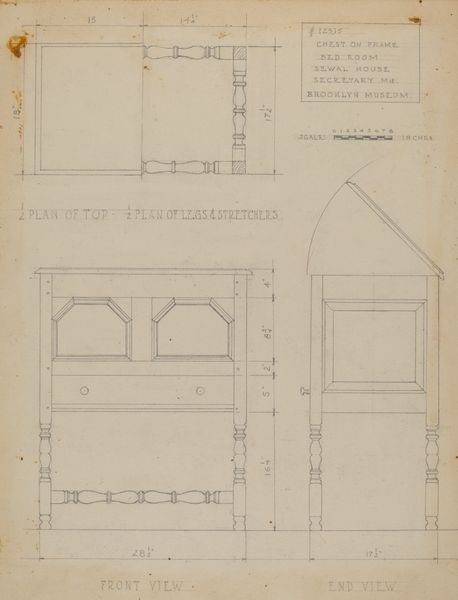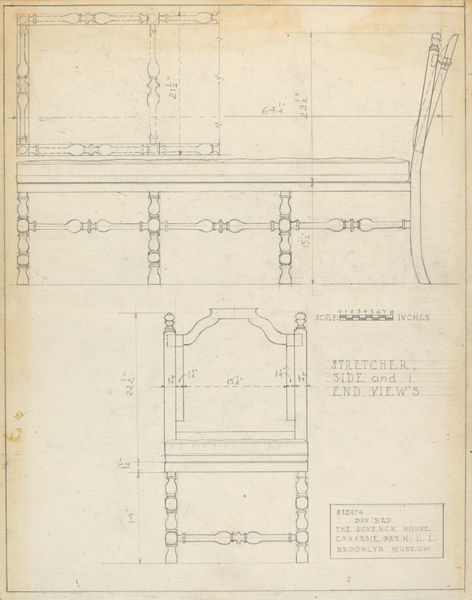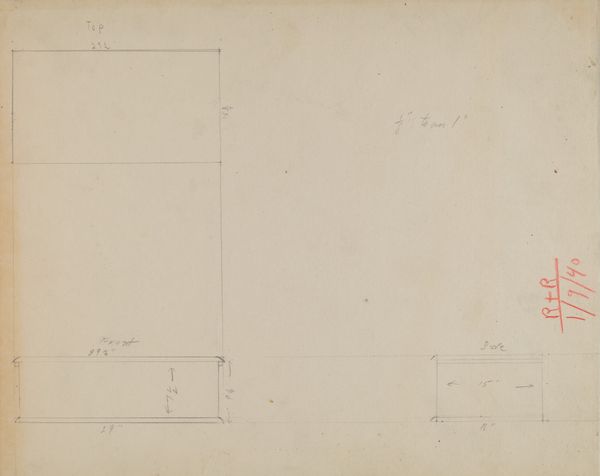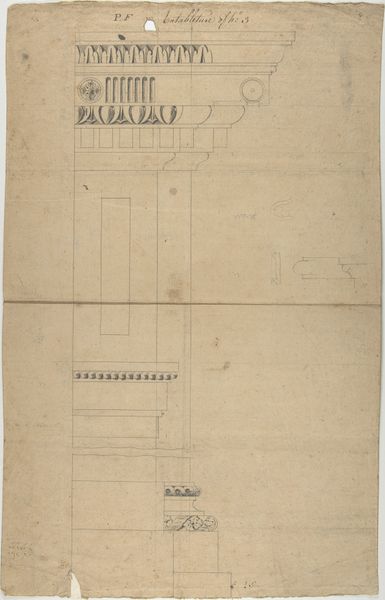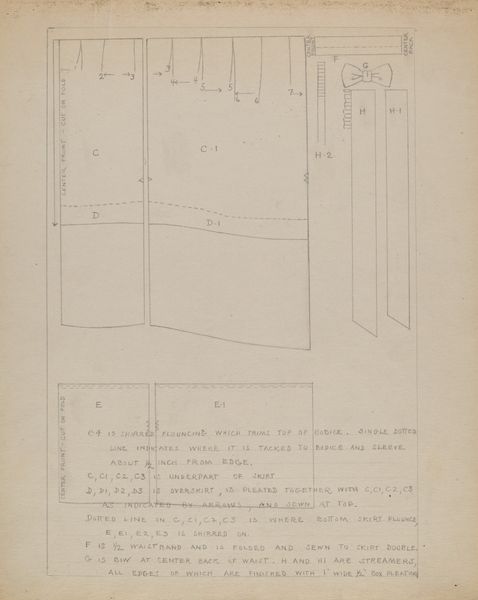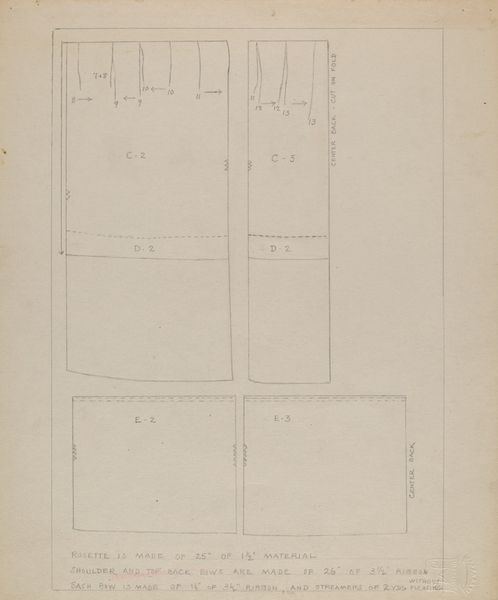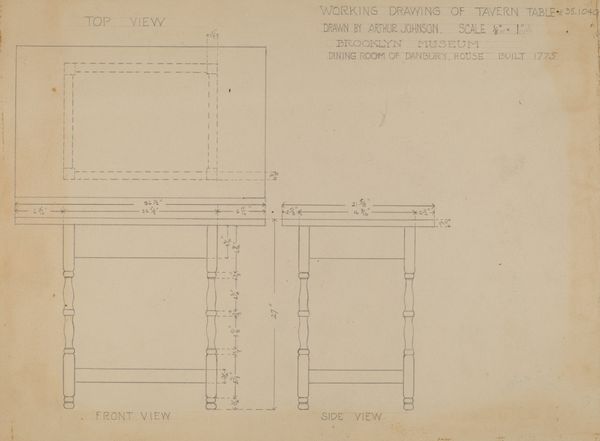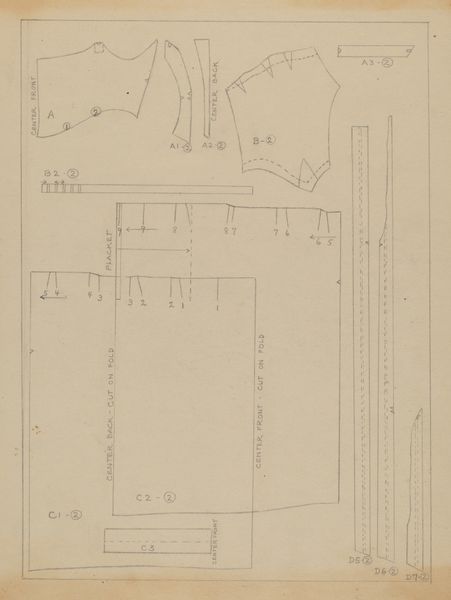
drawing, pencil
#
drawing
#
aged paper
#
furniture
#
sketch book
#
incomplete sketchy
#
hand drawn type
#
personal sketchbook
#
idea generation sketch
#
sketchwork
#
geometric
#
pencil
#
sketchbook drawing
#
storyboard and sketchbook work
#
academic-art
#
sketchbook art
#
realism
Dimensions: overall: 27.9 x 22.2 cm (11 x 8 3/4 in.)
Copyright: National Gallery of Art: CC0 1.0
Curator: Let's turn our attention to this intriguing pencil drawing from Jack Bochner's sketchbook, dating from 1935 to 1942. It’s titled "Highboy" and it's a technical elevation study. Editor: My first thought is how stark it feels. Almost architectural in its precision. The delicate pencil lines create such a fragile presence on that aged paper, don’t you think? It reminds me of those hushed museum archives, holding secrets in its cross-hatching. Curator: Exactly. It’s a peek behind the scenes of design and production. Highboys themselves were aspirational objects. Labor was intrinsic to their manufacture; specialized skills required of journeymen. This drawing would likely have served as instruction. Editor: Right. Imagine the craftsman poring over this, translating these lines into tangible form, revealing the wood’s natural grain while simultaneously being disciplined by such a formal approach! And it's not just a plan – it also represents value; it represents hours of someone's labor materialized! Curator: Precisely. Consider the economic conditions of the late 1930s when this drawing was made; mass-produced furniture threatened traditional craftsmanship. Bochner’s detailed sketches almost elevate this act of preservation and its cultural relevance in contemporary design. Editor: It's so lovely how something as utilitarian as furniture can trigger ideas of class and ambition in such a subtle and unassuming way. Its rigid lines suggest that form follows function and beauty follows purpose, maybe this artist also had big ambitions, like those who used it back then! Curator: An important note that this drawing wasn't necessarily created *for* a consumer or for display; we view it after its intention, and that changes the reception. Editor: Agreed. What’s amazing about rediscovering drawings like this is the opportunity it gives us to understand art from many different points of view: whether the eyes of consumers, critics, artists, designers, or producers. It’s thought-provoking! Curator: Indeed, a valuable insight on process, revealing the human element. Editor: Yeah! This sketch just breathes humanity into the form.
Comments
No comments
Be the first to comment and join the conversation on the ultimate creative platform.
